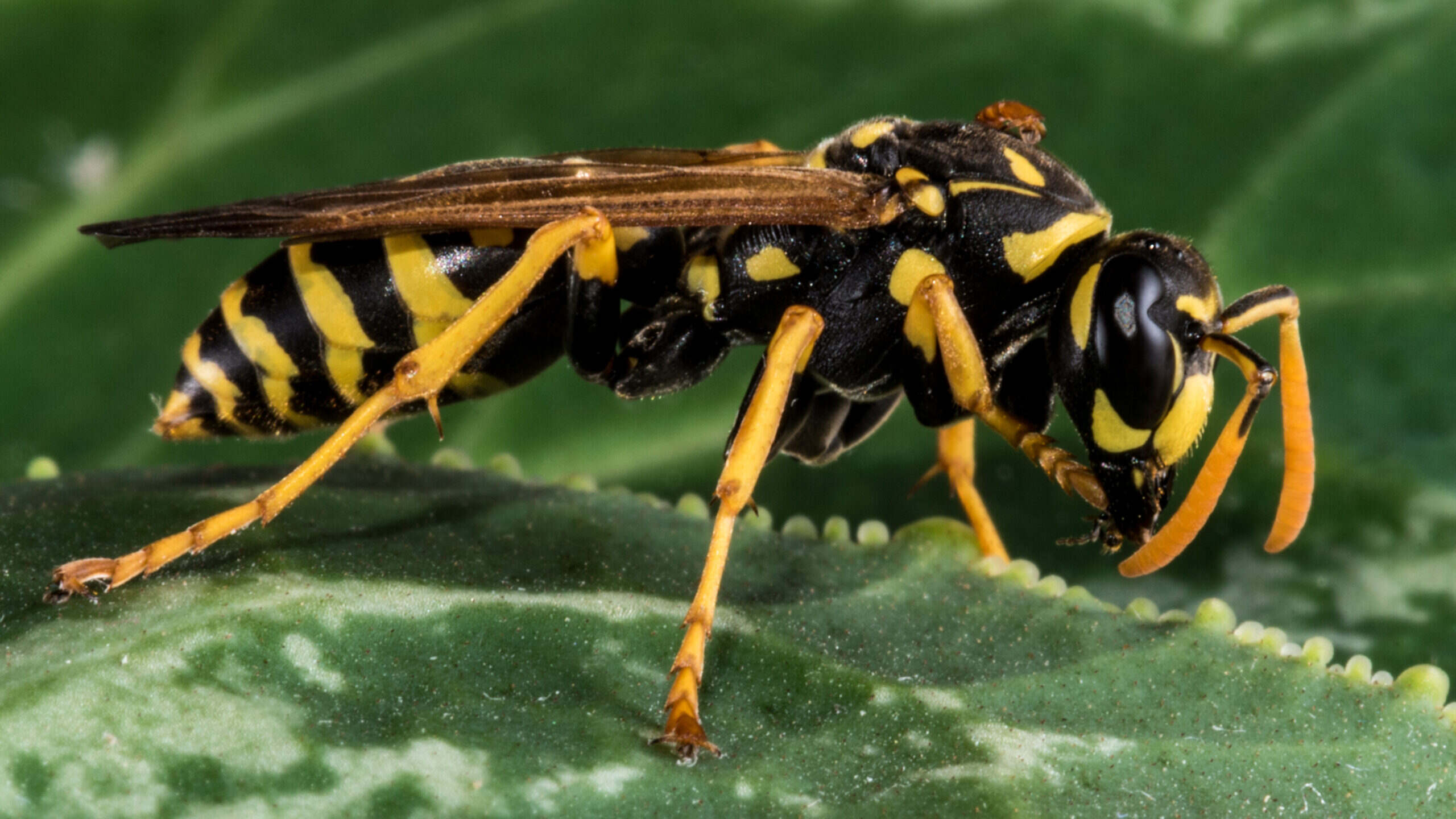Home>Maintenance & Safety>Pest Control Solutions>Do Yellow Jackets Lose Their Stinger When They Sting


Pest Control Solutions
Do Yellow Jackets Lose Their Stinger When They Sting
Modified: March 2, 2024
Learn about yellow jackets and their stingers. Find pest control solutions for dealing with these stinging insects. Protect your home and family.
(Many of the links in this article redirect to a specific reviewed product. Your purchase of these products through affiliate links helps to generate commission for Storables.com, at no extra cost. Learn more)
Introduction
Yellow jackets are notorious for their aggressive behavior and painful stings, often causing distress to those who encounter them. These insects, belonging to the Vespula and Dolichovespula genera, are commonly mistaken for bees due to their similar appearance. However, yellow jackets possess distinct characteristics, including their vibrant yellow and black markings, slender waists, and the ability to sting repeatedly. Understanding the nature of their stingers and the consequences of their stings is crucial for effectively managing encounters with these formidable insects.
In this comprehensive guide, we will delve into the intriguing world of yellow jackets, exploring the anatomy of their stingers, the physiological effects of their stings, and the common misconceptions surrounding their behavior. By shedding light on these aspects, we aim to provide valuable insights that can aid in fostering a deeper understanding of these fascinating yet formidable insects. So, let's embark on this enlightening journey to unravel the mysteries of yellow jackets and gain a newfound appreciation for the intricate mechanisms that govern their stinging behavior.
Key Takeaways:
- Yellow jackets have a smooth stinger, so they can sting multiple times without dying. Be cautious around them to avoid multiple stings and potential allergic reactions.
- When a yellow jacket stings, it releases venom that causes pain and attracts more yellow jackets. Understanding their behavior can help you stay safe around them.
Read more: Why Do Yellow Jackets Sting
Anatomy of a Yellow Jacket's Stinger
The stinger of a yellow jacket is a remarkable biological feature that serves as a potent defense mechanism and a tool for subduing prey. Composed of a complex arrangement of specialized structures, the stinger embodies the evolutionary adaptations that have enabled yellow jackets to thrive in diverse environments. At the core of the stinger lies a sophisticated system designed to deliver venom with precision, inflicting pain and deterring potential threats.
The yellow jacket's stinger is a modified ovipositor, a structure primarily associated with egg-laying in female insects. This adaptation allows the yellow jacket to repurpose its ovipositor for defensive and offensive purposes, showcasing the remarkable versatility of this anatomical feature. The stinger consists of a sharp, needle-like structure connected to a venom sac, which contains the potent cocktail of chemicals responsible for the intense pain experienced upon being stung.
The needle-like component of the stinger is designed to penetrate the victim's skin with minimal resistance, facilitating the delivery of venom into the underlying tissues. This efficient design enables yellow jackets to swiftly deploy their stingers when threatened, ensuring that their defensive response is swift and effective. Furthermore, the venom sac attached to the stinger contains a potent blend of toxins and pheromones, which can induce pain, inflammation, and attract other yellow jackets to join the defensive assault.
The intricate anatomy of the yellow jacket's stinger underscores the evolutionary adaptations that have honed this species' ability to defend itself and assert dominance within its ecological niche. By understanding the intricate details of the stinger's structure, we can gain a deeper appreciation for the complex interplay between biological adaptations and behavioral strategies that have enabled yellow jackets to thrive as formidable insects in the natural world.
In summary, the anatomy of a yellow jacket's stinger represents a marvel of biological engineering, showcasing the intricate adaptations that have endowed these insects with a potent means of defense and predation. This remarkable anatomical feature serves as a testament to the ingenuity of nature, highlighting the diverse ways in which organisms have evolved to navigate the challenges of their environments.
What Happens When a Yellow Jacket Stings
When a yellow jacket stings, it initiates a sequence of events that can evoke intense physiological and behavioral responses in the victim. The process begins with the penetration of the victim's skin by the needle-like stinger, which swiftly injects a potent blend of venom into the underlying tissues. This venom, comprising a complex mixture of chemicals, serves as the primary agent responsible for the excruciating pain and localized reactions experienced upon being stung.
Upon contact with the victim's skin, the yellow jacket's stinger releases venom, triggering an immediate inflammatory response. The venom contains a potent cocktail of biologically active compounds, including histamines, kinins, and enzymes, which act in concert to induce pain, swelling, and redness at the site of the sting. These inflammatory mediators provoke the dilation of blood vessels, leading to increased blood flow to the affected area and the accumulation of immune cells, such as neutrophils and macrophages, to combat the perceived threat.
In addition to the localized inflammatory response, the venom of a yellow jacket also contains pheromones, chemical signals that can attract other yellow jackets to the scene of the sting. This phenomenon can result in multiple yellow jackets converging on the victim, intensifying the defensive assault and increasing the likelihood of repeated stings. The aggregation of yellow jackets in response to pheromones underscores the social nature of these insects and their collective defense strategies, which can pose significant risks to individuals who inadvertently disturb their nests.
Furthermore, the venom of a yellow jacket can elicit systemic reactions in some individuals, particularly those who are hypersensitive or allergic to insect stings. In severe cases, anaphylaxis, a life-threatening allergic reaction, can occur, manifesting as widespread hives, difficulty breathing, and a precipitous drop in blood pressure. Anaphylactic reactions to yellow jacket stings necessitate immediate medical attention and the administration of epinephrine to counteract the systemic effects of the venom.
In summary, when a yellow jacket stings, it sets in motion a cascade of physiological responses that encompass local inflammation, the release of pheromones, and the potential for systemic allergic reactions. Understanding the multifaceted impact of a yellow jacket sting is crucial for adopting appropriate preventive measures and responding effectively to mitigate the associated risks. By gaining insights into the intricacies of these interactions, individuals can navigate their encounters with yellow jackets with heightened awareness and preparedness, minimizing the likelihood of adverse outcomes stemming from their formidable stinging capabilities.
If you get stung by a yellow jacket, remember to remove the stinger carefully to avoid releasing more venom into your skin. Use a credit card or your fingernail to scrape it out.
Do Yellow Jackets Die After Stinging
Yellow jackets, unlike honeybees, do not typically die after stinging. This key distinction arises from the fundamental differences in the anatomical structure and function of their respective stingers. When a honeybee stings, its barbed stinger becomes lodged in the victim's skin, causing the bee to suffer a fatal injury upon attempting to disengage. In contrast, the stinger of a yellow jacket is smooth and lacks barbs, allowing the insect to withdraw its stinger and sting repeatedly without sacrificing its life.
The absence of barbs on the yellow jacket's stinger enables it to execute multiple stinging maneuvers, making these insects particularly formidable when provoked. This ability to sting repeatedly is a testament to the evolutionary adaptations that have endowed yellow jackets with a potent means of defense and aggression. By delivering venom with precision and efficiency, yellow jackets can assert dominance and repel perceived threats without incurring the ultimate cost of their own lives.
Furthermore, the capacity for multiple stings underscores the formidable nature of yellow jackets, especially in the context of defending their nests and foraging territories. When faced with intruders or potential predators, yellow jackets can unleash a barrage of stings, overwhelming their adversaries and effectively safeguarding their colonies. This defensive strategy, coupled with the ability to release pheromones that attract other yellow jackets to join the defensive assault, exemplifies the collective and coordinated nature of their responses to perceived threats.
The ability of yellow jackets to sting repeatedly carries significant implications for individuals who may inadvertently provoke these insects. Unlike the solitary sting of a honeybee, a single encounter with a yellow jacket can result in multiple stings, intensifying the pain and potential allergic reactions experienced by the victim. This heightened risk underscores the importance of exercising caution and employing preventive measures to minimize the likelihood of provoking these formidable insects.
In summary, yellow jackets do not die after stinging, thanks to the smooth, barbless nature of their stingers. This adaptation allows them to deliver multiple stings, amplifying the potency of their defensive and aggressive capabilities. By understanding this aspect of yellow jacket behavior, individuals can approach interactions with these insects with heightened awareness and take proactive measures to mitigate the risks associated with their formidable stinging prowess.
Conclusion
In conclusion, the enigmatic nature of yellow jackets and their stinging behavior has been unveiled through a captivating exploration of their anatomical adaptations, physiological effects of stings, and the intriguing phenomenon of multiple stinging capabilities. By delving into the intricate details of the yellow jacket's stinger, we have gained a profound understanding of the evolutionary marvel that underpins their formidable defensive and aggressive capabilities.
The anatomy of a yellow jacket's stinger stands as a testament to the ingenuity of nature, showcasing the remarkable adaptations that have endowed these insects with a potent means of defense and predation. The repurposing of the ovipositor into a multifunctional stinging apparatus exemplifies the evolutionary versatility that has enabled yellow jackets to thrive as formidable insects in diverse ecological landscapes.
Furthermore, the physiological effects of a yellow jacket sting have been elucidated, shedding light on the intricate interplay of venom constituents that induce pain, inflammation, and the potential for systemic allergic reactions. The release of pheromones and the aggregation of yellow jackets in response to a sting underscore the social and collective nature of their defensive strategies, highlighting the coordinated responses that pose significant risks to individuals who inadvertently disturb their nests.
The revelation that yellow jackets do not die after stinging, owing to the smooth, barbless nature of their stingers, has unveiled the formidable nature of these insects' defensive and aggressive capabilities. This insight underscores the heightened risks associated with provoking yellow jackets and emphasizes the importance of exercising caution and implementing preventive measures to minimize potential encounters with these formidable insects.
In essence, our journey into the world of yellow jackets has provided a comprehensive and enlightening perspective on their stinging behavior, offering valuable insights that can inform proactive approaches to mitigate the risks associated with these formidable insects. By fostering a deeper understanding of their intricate adaptations and behavioral strategies, individuals can navigate their interactions with yellow jackets with heightened awareness and preparedness, fostering a harmonious coexistence with these captivating yet formidable inhabitants of the natural world.
Frequently Asked Questions about Do Yellow Jackets Lose Their Stinger When They Sting
Was this page helpful?
At Storables.com, we guarantee accurate and reliable information. Our content, validated by Expert Board Contributors, is crafted following stringent Editorial Policies. We're committed to providing you with well-researched, expert-backed insights for all your informational needs.
















0 thoughts on “Do Yellow Jackets Lose Their Stinger When They Sting”